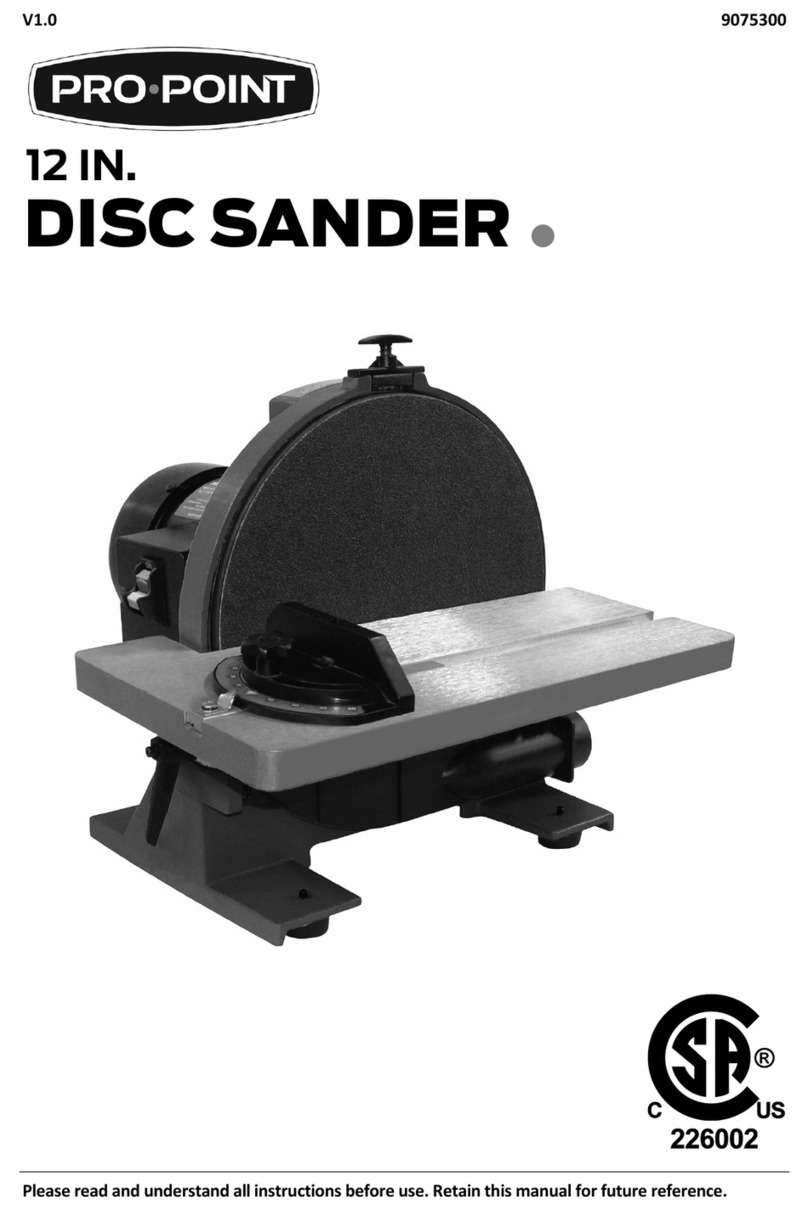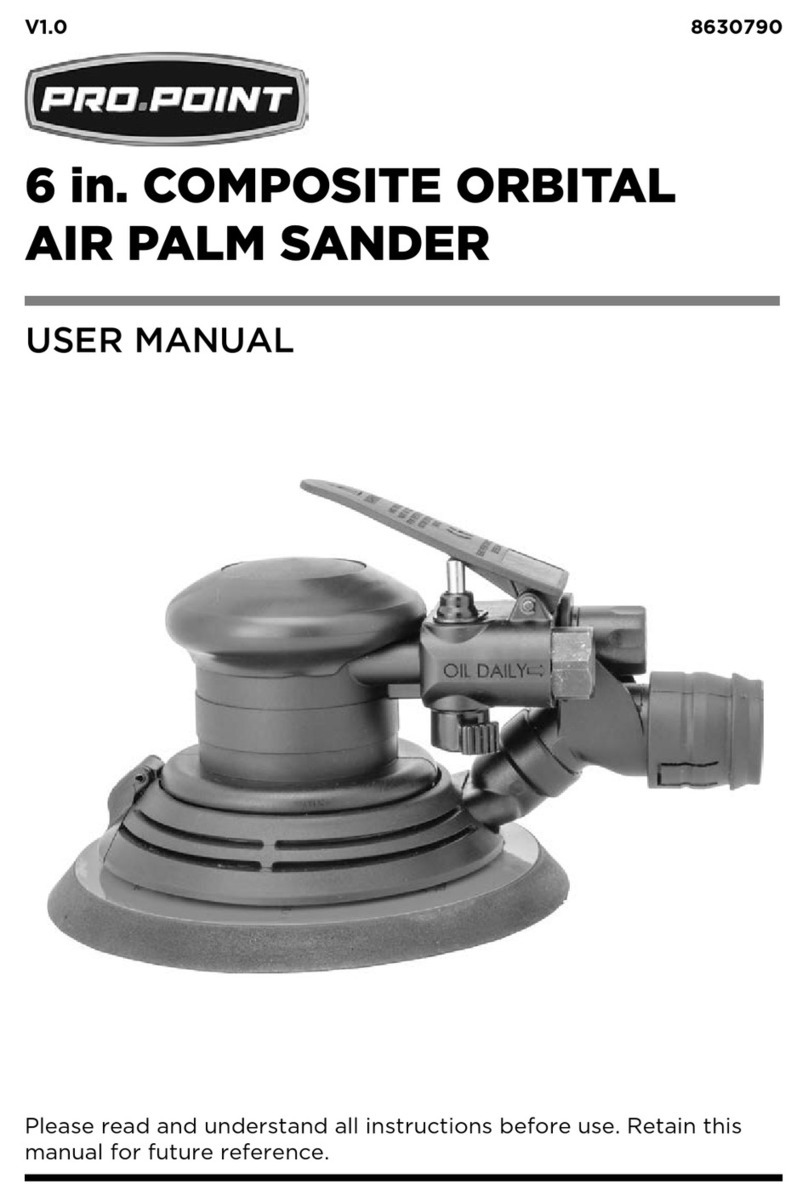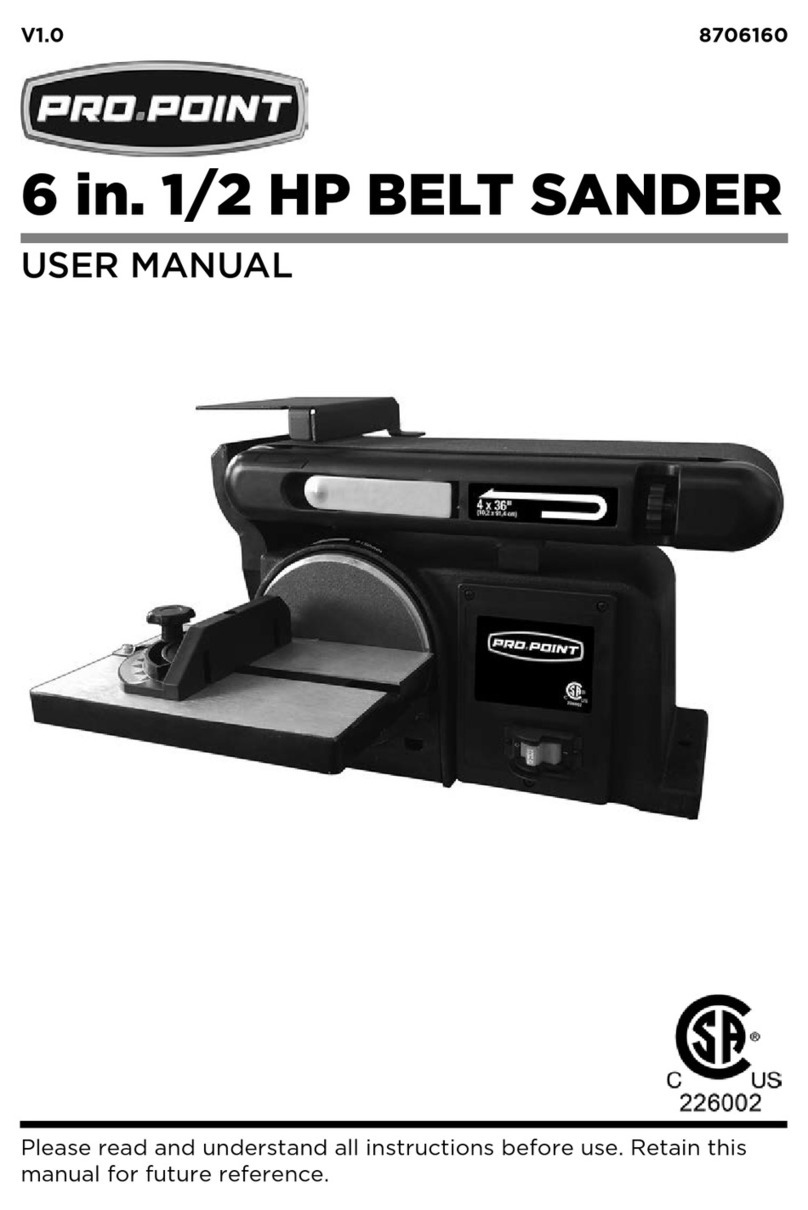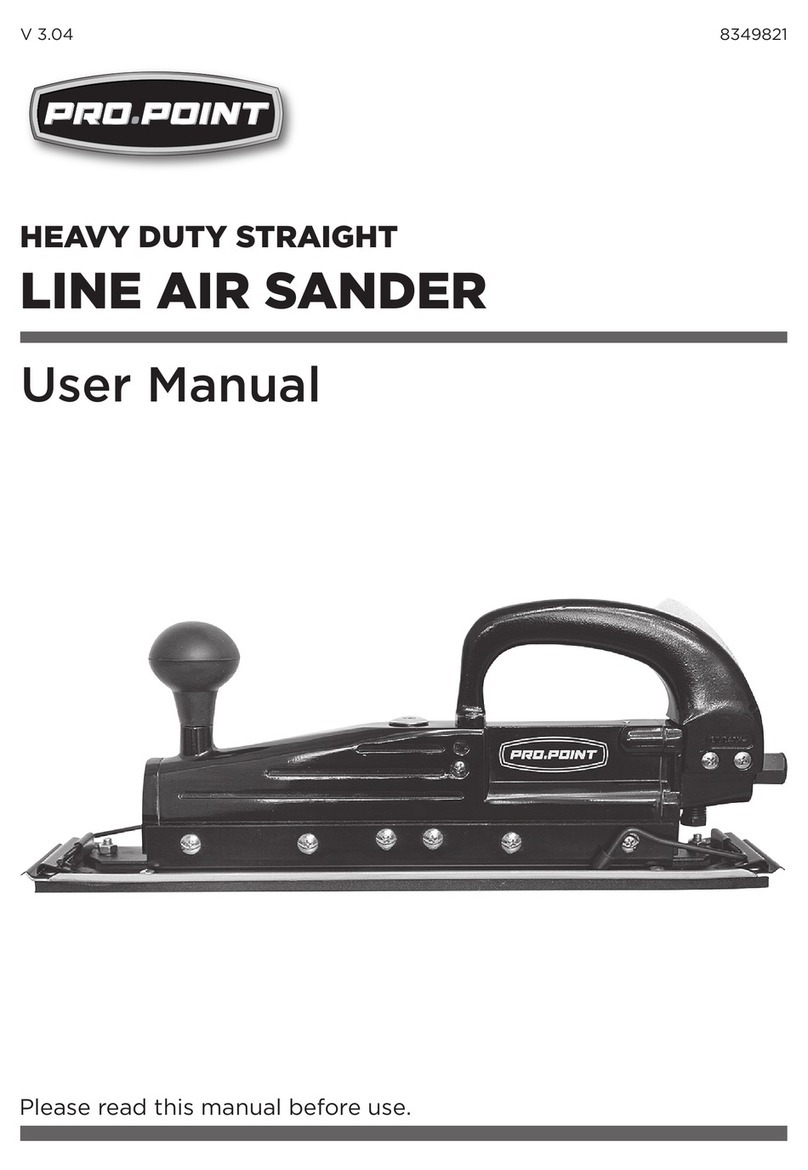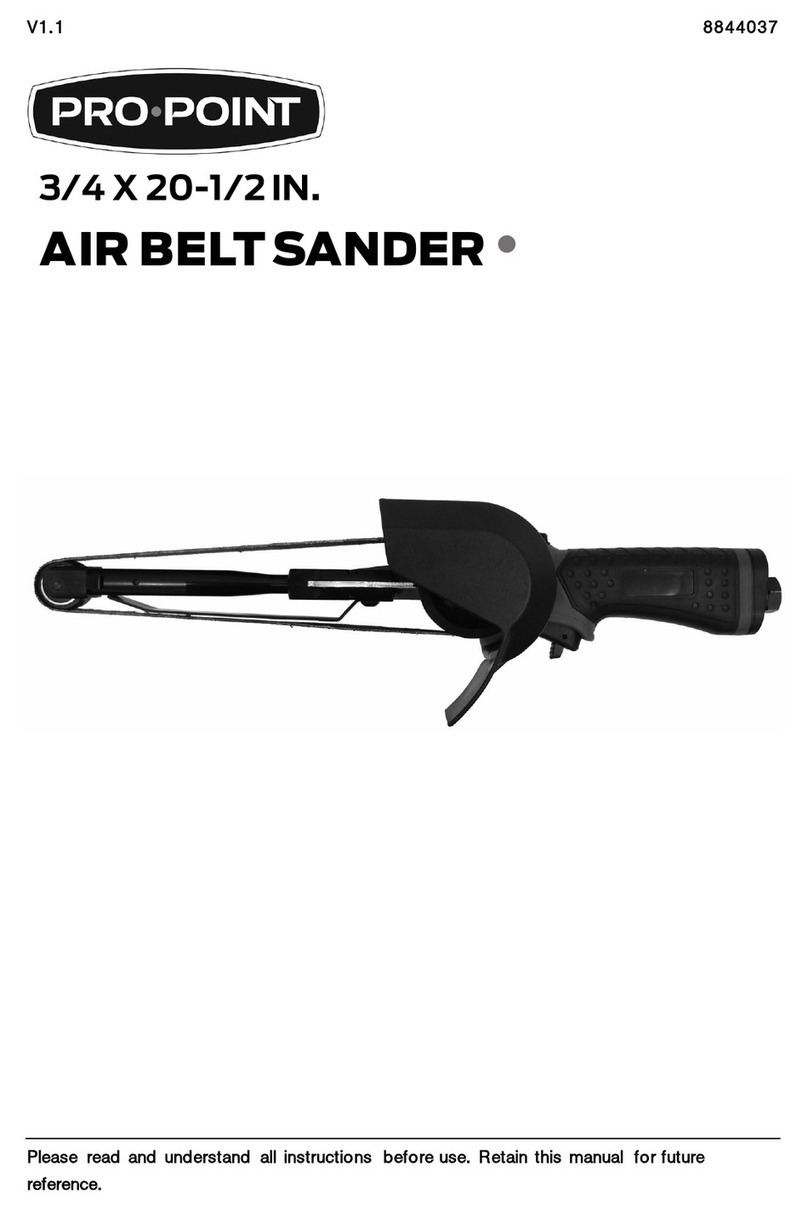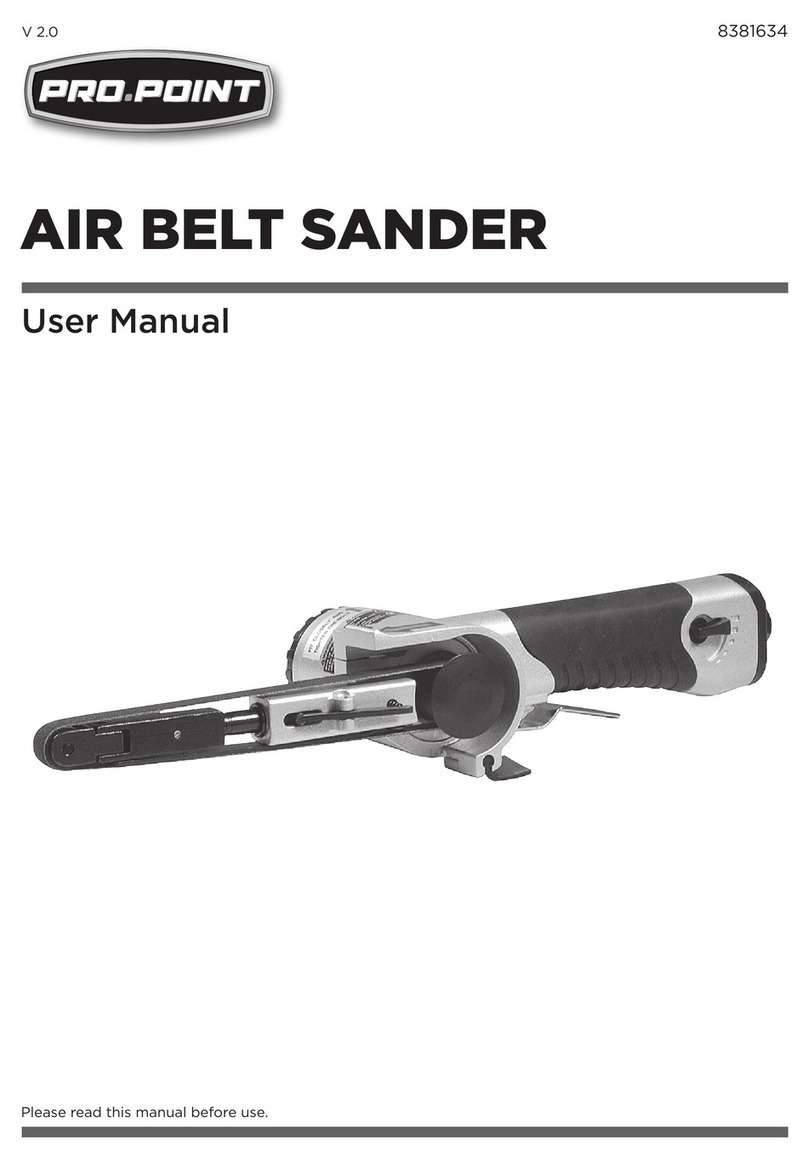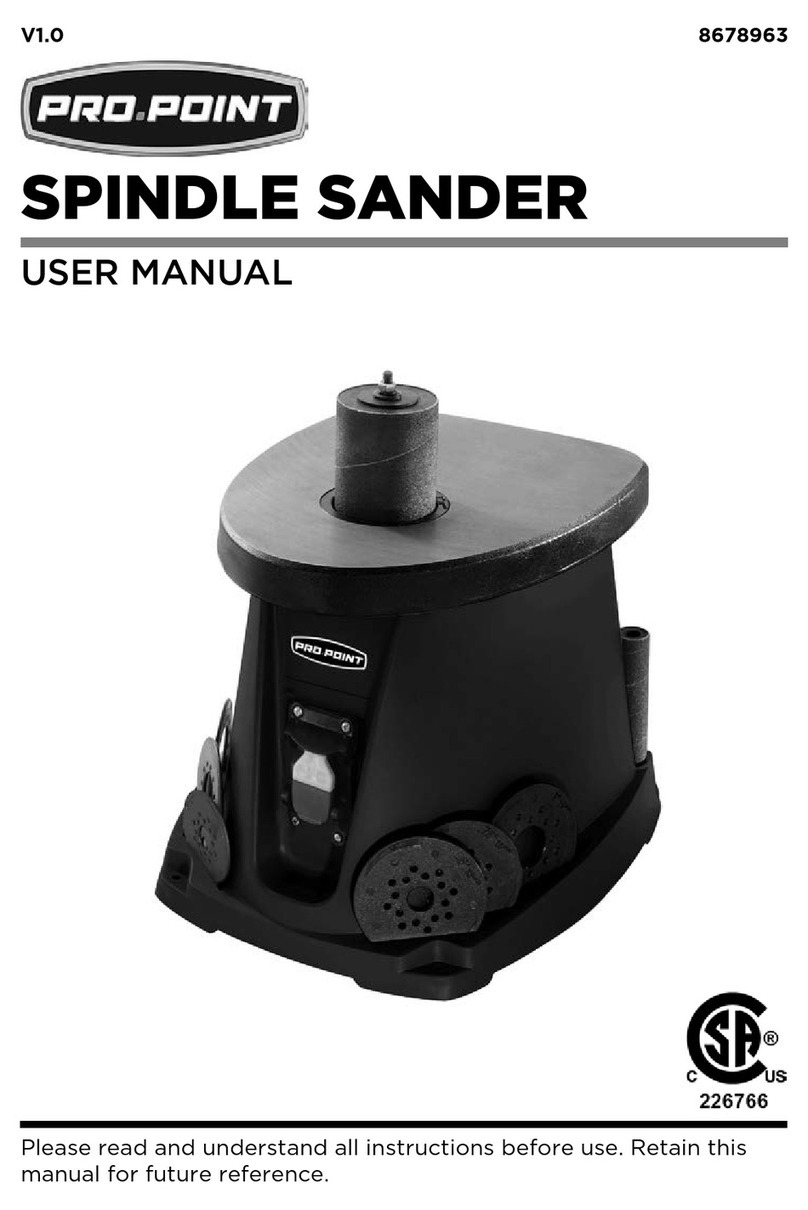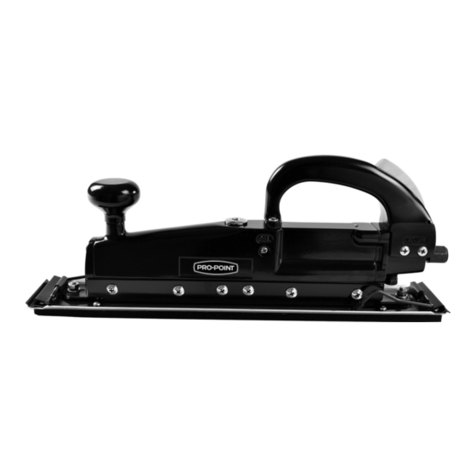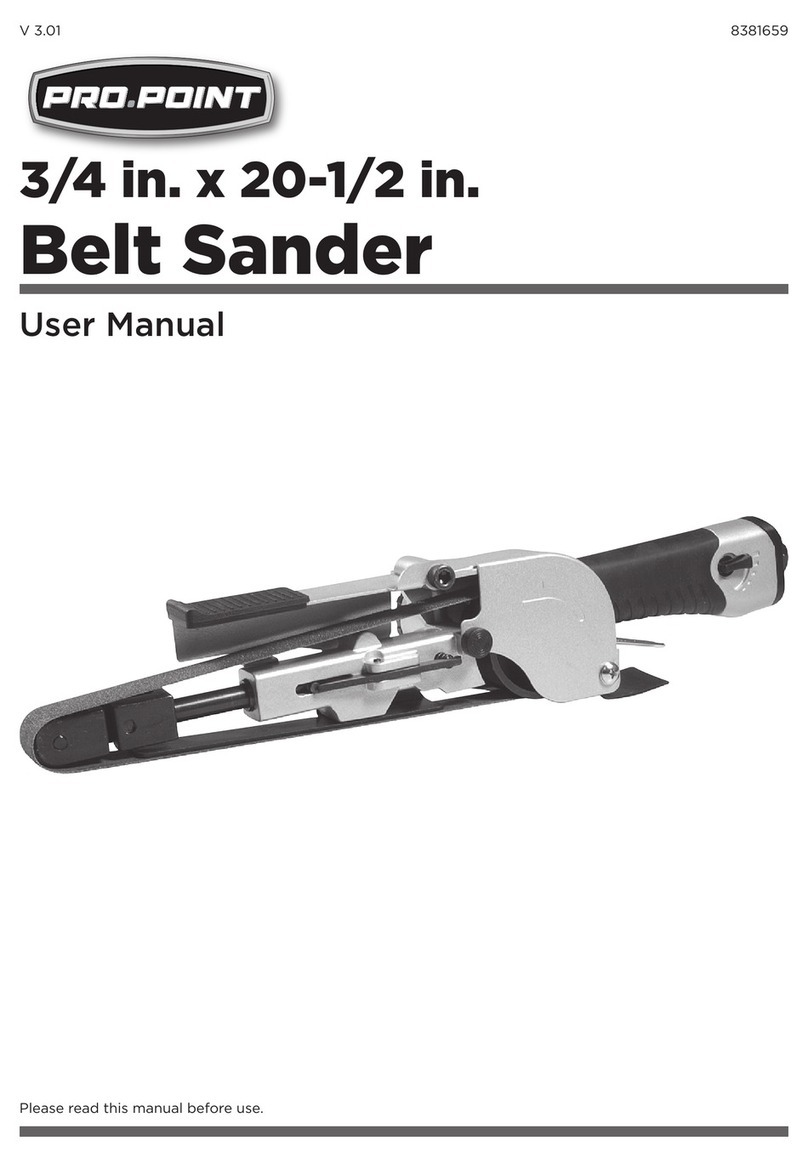
V1.0 HIGH SPEED ANGLED AIR SANDER 8348708
Visit www.princessauto.com for more information 5
4. Support the workpiece or clamp it to a stable platform.
Holding the workpiece by hand or against your body may
lead to personal injury.
SPECIFIC SAFETY PRECAUTIONS
WARNING! DO NOT let comfort or familiarity with product
(gained from repeated use) replace strict adherence to the
tool safety rules. If you use this tool unsafely or incorrectly,
you can suffer serious personal injury.
WARNING! Some wood contains preservative such as copper
chromium arsenate (CCA), which can be toxic. When sanding
these materials extra care should be taken to avoid inhalation
and minimize skin contact.
1. Use the correct tool for the job. This tool was designed for
a specific function. Do not modify or alter this tool or use it
for an unintended purpose.
2. Keep hands and fingers away from sanding area. Any part
of the body coming in contact with moving parts could
cause injury.
3. When operating the sander, use proper eye and hearing
protection as well as protective gloves.
4. Never force the tool. Excessive pressure could bend or
break the sander, resulting in damage to the tool, your
workpiece or serious personal injury. If your sander runs
smoothly under no load, but does not run smoothly under
load, then excessive pressure is being used.
5. This tool will not stop moving immediately. Do not lay the
tool down or leave it unattended until it has come to a
complete stop. A part that is moving could make the tool
jump or grab a surface and pull the tool out of your control.
6. Use an appropriate dust respirator when working for an
extended period of time. This will help prevent breathing in
the fine dust created while working.
